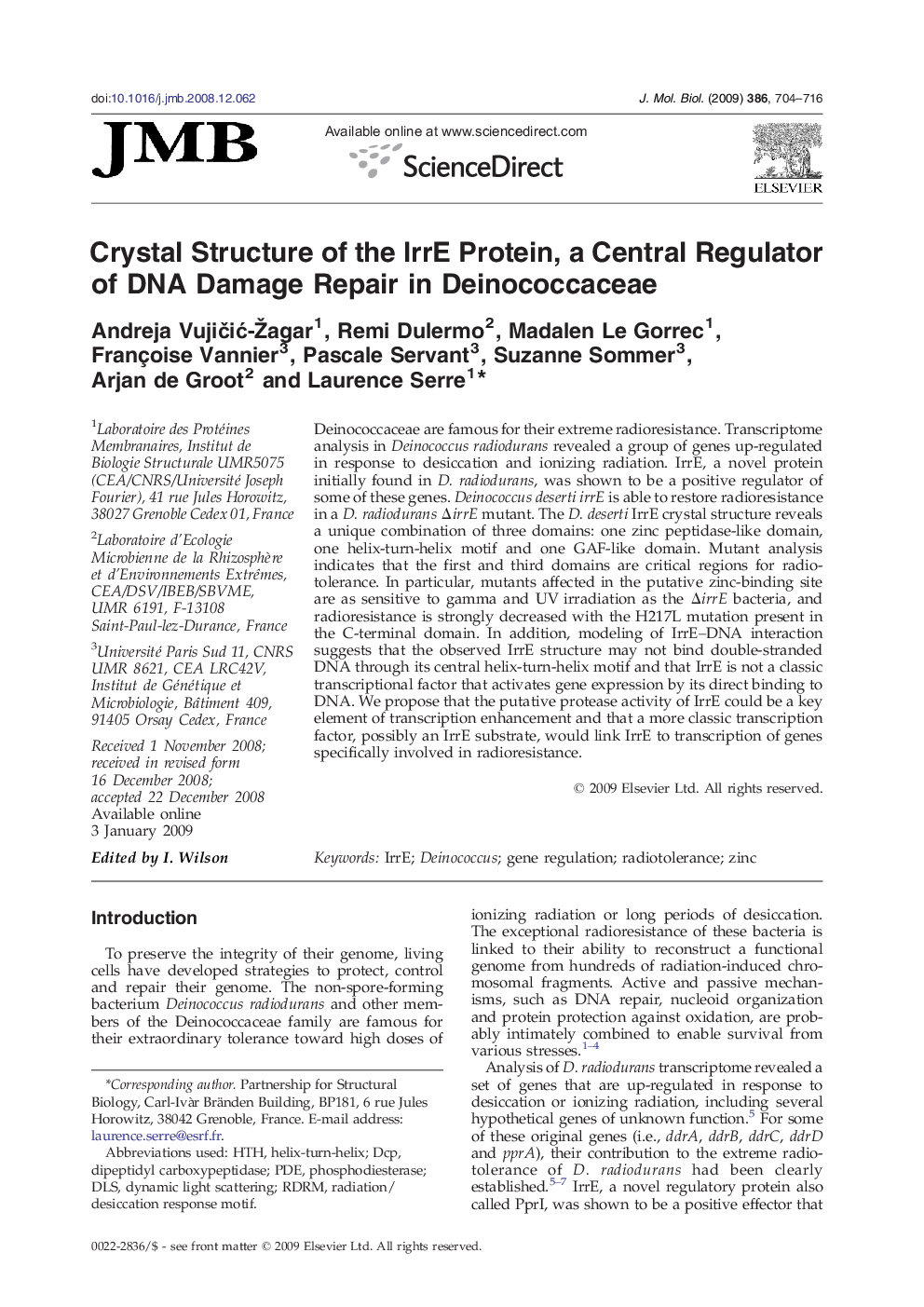| Article ID | Journal | Published Year | Pages | File Type |
|---|---|---|---|---|
| 2186900 | Journal of Molecular Biology | 2009 | 13 Pages |
Deinococcaceae are famous for their extreme radioresistance. Transcriptome analysis in Deinococcus radiodurans revealed a group of genes up-regulated in response to desiccation and ionizing radiation. IrrE, a novel protein initially found in D. radiodurans, was shown to be a positive regulator of some of these genes. Deinococcus deserti irrE is able to restore radioresistance in a D. radiodurans ΔirrE mutant. The D. deserti IrrE crystal structure reveals a unique combination of three domains: one zinc peptidase-like domain, one helix-turn-helix motif and one GAF-like domain. Mutant analysis indicates that the first and third domains are critical regions for radiotolerance. In particular, mutants affected in the putative zinc-binding site are as sensitive to gamma and UV irradiation as the ΔirrE bacteria, and radioresistance is strongly decreased with the H217L mutation present in the C-terminal domain. In addition, modeling of IrrE–DNA interaction suggests that the observed IrrE structure may not bind double-stranded DNA through its central helix-turn-helix motif and that IrrE is not a classic transcriptional factor that activates gene expression by its direct binding to DNA. We propose that the putative protease activity of IrrE could be a key element of transcription enhancement and that a more classic transcription factor, possibly an IrrE substrate, would link IrrE to transcription of genes specifically involved in radioresistance.
